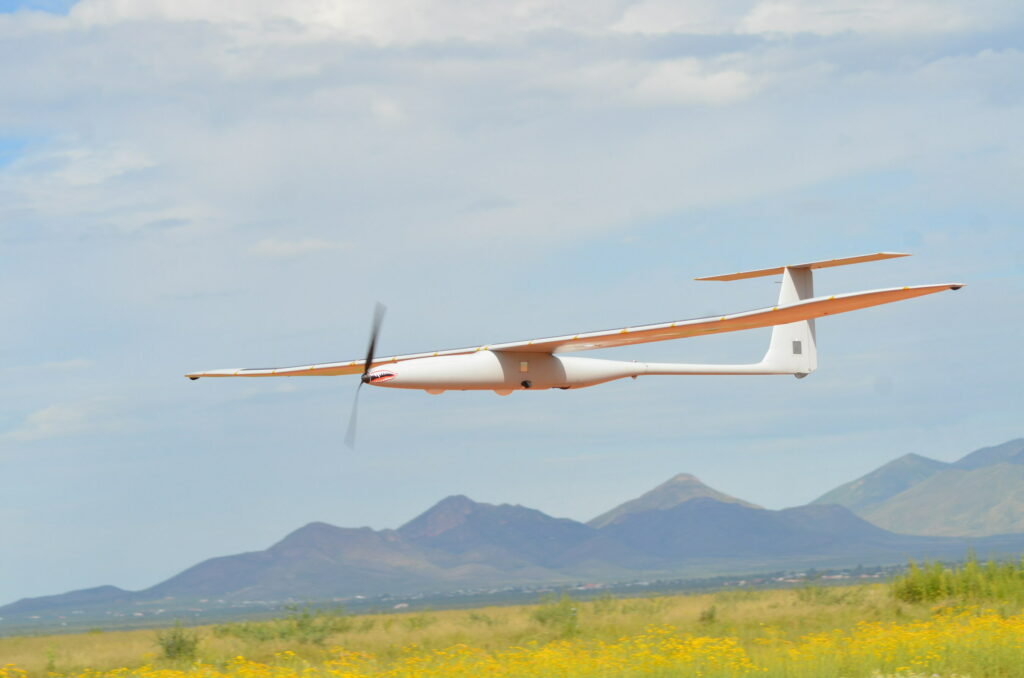
The K1000ULE, while providing the longest flight endurance in eVTOL category, is also enabled to share information between different platforms, repositioning aircraft on demand based on sensor needs, while dynamically populating the Common Operating Picture. (PRNewsfoto/Kraus Hamdani Aerospace)
The UAS was evaluated for numerous capabilities, including extended flight time and day and night operations.
EMERYVILLE, Calif.— Kraus Hamdani Aerospace reported that it was selected by the U.S. Navy Small Tactical Small Tactical Unmanned Aircraft Systems Program (PMA 263) to provide the K1000ULE solar-electric, vertical takeoff and landing (VTOL) unmanned aerial system (UAS). The solar-electric VTOL UAS will be fielded by the United States Marine Corps Small Unit Remote Scouting System, the company said in a release.
The Navy ultimately selected the K1000ULE through a comprehensive down selection evaluation process that was conducted at a government test facility and overseen by the University of Maryland UAS Research and Operations Center, according to the release.
Numerous capabilities were evaluated, including enhanced maneuverability; silent operations to minimize detection; airborne endurance (extended flight time); day and night operations and sensor capabilities; vertical takeoff and landing capabilities, ensuring independence from traditional runways; and intelligence, surveillance, and reconnaissance (ISR) with target acquisition capabilities.
These capabilities, in the hands of the U.S. Marine Corps, are expected to enhance the Navy’s capacity to perform intelligence, surveillance, and reconnaissance operations in a simpler, faster, and more cost-effective manner, with the ultimate objective of saving lives. In addition, the Navy will get enhanced long-range communication capabilities, enabling continued coverage in denied and contested environments, the company said in the release.
The K1000ULE, while reportedly providing the longest endurance in the electric Group-2 VTOL category, is enabled to share critical data between platforms within its network. This is said to allow for “repositioning of aircraft on-demand, based on sensor input, while dynamically populating the Common Operating Picture,” according to the release.
Kraus Hamdani said a single operator can control a swarm of K1000ULE UAS through a simple user interface, identifying specific coverage areas and launching the correct number of aircraft to fulfill dynamic missions. “The pilot has full situational awareness and can dynamically re-task aircraft in real-time as mission objectives change, using gamified user interfaces,” the company said.
Kraus Hamdani Aerospace builds Ultra-Long Endurance (ULE) Unmanned Aerial Systems that are said to mimic nature by leveraging onboard artificial intelligence to silently glide through the air like a bird and generate clean onboard energy. The K1000ULE is reportedly the world’s longest endurance fully electric zero emissions autonomous unmanned aircraft in its size and weight category. It comprises aerial-based data, ISR, and communication services enabled by multi-drone coordination systems (coordinated swarming).
These capabilities address critical customer needs within various sectors, such as emergency and disaster relief, data and telecommunications, defense, agriculture, oil and gas, climate change, and wildlife preservation, the company said.
